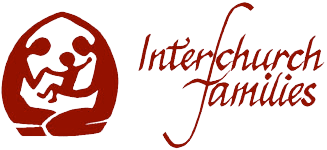555-555-5555
mymail@mailservice.com
INTERCHURCH FAMILIES: SIGN AND SUMMONS
Published Winter 2001, in
'Koinonia',
a publication of
The Paulist Office for Ecumenical and Interreligious Relations
Fr. Tom Ryan, Editor
(used with permission)
Catholic priests who were already in ministry in the pre-Vatican II years tell how they have seen wedding ceremonies with interchurch couples move from the rectory, to the sacristy, to the sanctuary of the Church where they are now routinely blessed by clergy of both churches. The remember the days when such spouses were "airbrushed" from the portrait of the Church because they did not fit the ideal of a one-church family.
With the Council came an evolved understanding of the one Church of Christ as the communion of all the baptized and the recognition that Christians are already in a real but imperfect unity. One of the goals of the ecumenical movement is to help Christians give a fuller and more visible expression fo their deep koinonia in the Trinitarian life.
It has been a big step for pastoral leaders to move from seeing interchurch couples as risk and liability to seeing them as gift.
Gift? How so? They are succeeding in ecumenical life where the institutional churches loiter, perplexed. The Canadian Anglican and Roman Catholic bishops referred to these families as a "domestic church... called to exercise a prophetic role for our larger church communities."
The bishops encouraged the couples to make their presence felt, asserting that in the unity they live, they are "a prophetic sign that the unity of faith and life sought by their respective churches is a real possibility. The family itself is called to be an image of the church and a sign of unity for the world" (Pastoral Guidelines for Interchurch Marriages).
Interchurch couples represent a growing population. In many dioceses throughout North America, interchurch and interfaith marriages outnumber same-church marriages.
How are we nurturing these couples and families and helping them copy constructively with the particular challenges that are theirs?
While canon lawyers and bishops continue to say that "double belonging" is not possible, an increasing number of families know it is. In a very active way, many interchurch partners are participating in the life of both communities, and their children are being nourished within both traditions of their parents.
The presence of interchurch families in growing numbers is a force pushing the churches along the road to unity. These couples are on the front lines; there are none who carry the burden of our historical divisions upon their backs as they do.
They stand at the very heart of the conversion which ecumenism requires. AS Vatican II requested of us all, they put the truths of their faith in order so as to unite around a central core of belief, accepting a certain diversity in the periphery. They are a moving force because they already live as reconciled Christians. Everything that is gained by them and for them serves the whole Church.
How can we support them in our parishes? 1) Offer them the opportunity to form an interchurch families support group. 2) Put them in touch with wider support networks, like the American or Canadian Associations of Interchurch Families. 3) Assure that marriage preparation programs in your parish or diocese take their particular needs into account through a special workshop / presentation.
Contact Us
3rd Floor,
20 King Street,
London,
EC2V 8EG.
Contact Us
Telephone: +44 (0)20 3384 2947
Email: info@interchurchfamilies.org.uk
Registered Charity No. 283811

